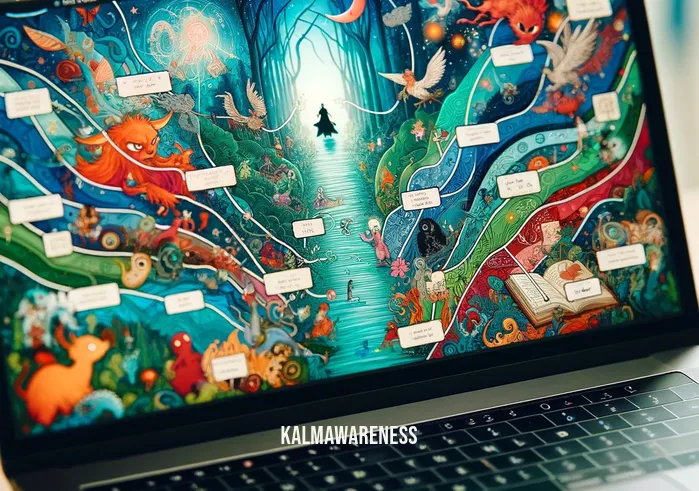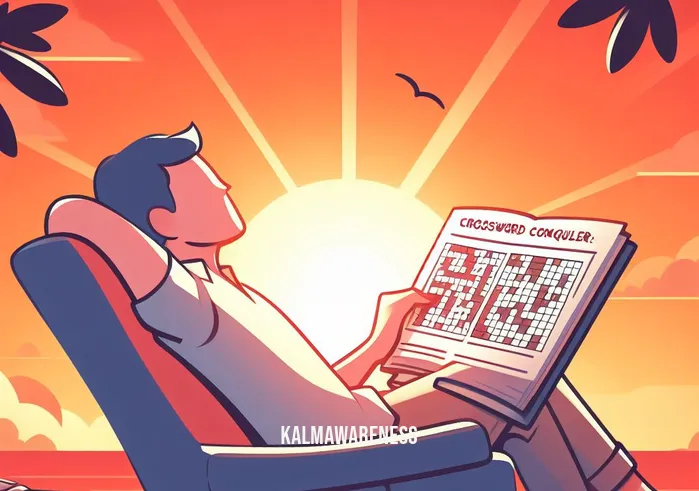The Art and Craft of Making Up Stories: An Introduction to Fiction Writing
The timeless act of making up stories is a journey into the depths of human imagination and creativity. Every culture, every generation, every human, at some point, indulges in the craft of storytelling, breathing life into characters and weaving tales that leave an indelible mark on the minds of listeners and readers alike. In the vast universe of literature, fiction has its own unique space, a realm where the mind’s creations know no boundaries. This initial exploration will guide us through the essence of fiction writing, laying the foundation for deeper dives in the segments that follow.
Storytelling: A Legacy of Humankind
The art of storytelling dates back to ancient civilizations. Before the advent of written words, stories were passed down orally, painting pictures of gods, heroes, monsters, and everyday life. The narratives were not just tales of entertainment but also embodied the values, fears, hopes, and dreams of their tellers. Monologue pictures offer a glimpse into this ancestral practice, capturing the emotions and nuances of a storyteller lost in their narrative.
The Power of Fiction in Modern Times
In the contemporary world, the power of fiction has multiplied manifold. Through books, movies, and even video games like Among Us bedtime story, fictional stories shape our beliefs, fuel our dreams, and sometimes even challenge our perceptions. They are the mirrors and windows to the society we live in, reflecting the existing while illuminating the possible. A fine example is the narrative brought out in The Notebook monologue, where emotions flow seamlessly, connecting the storyteller and the audience.
Harnessing Imagination and Creativity
The ability to create is innate, yet the skill to craft compelling stories is often honed over time. The imaginative process involves visualizing scenarios, breathing life into characters, and devising intricate plots. Gwenda Kaczor, in her creative explorations highlighted in this feature, emphasizes the significance of nurturing imagination and allowing it to roam freely. To create fictional universes, one must sometimes defy logic, embrace the unusual, and relish the uncertainty.
Character Development and Its Essence
A story is as strong as its characters. From iconic figures like Luke Skywalker, who battles with complex emotions like anger, to everyday individuals facing life’s myriad challenges, well-developed characters are the bedrock of captivating fiction. They carry the plot, evoke emotions, and become relatable entities, making readers invest in their journeys.
Creative Non-fiction: Telling It Slant
While fiction has its charm, creative non-fiction brings a fresh perspective. As the name suggests, it’s rooted in reality, but the narration is layered with creative elements. It’s a delicate balance, as explored in-depth in the guide on Tell It Slant: Writing and Shaping Creative Nonfiction. It underscores the power of truth, rendered beautifully with a touch of creative finesse.
In conclusion, fiction writing, and storytelling, in general, is a celebration of human creativity. It’s about making connections, triggering emotions, and above all, making up stories that resonate. With gratitude, we acknowledge the storytellers of the past and the creators of today, who gift us with tales that inspire and entertain. As showcased in the gratitude in action photos, there is so much to be thankful for in the realm of literature and creativity.
As we progress, we’ll delve deeper into the intricacies of storytelling, exploring techniques, challenges, and the sheer magic of conjuring worlds with words. For a poetic touch to this exploration, continue reading with an insight into Open Heart Poetry in the next segment. The universe of making up stories beckons!

Crafting Compelling Narratives: The Techniques Behind Making Up Stories
In the vast canvas of storytelling, the art of making up stories holds a place of prominence. Fiction, a testament to human imagination, offers both the creator and the audience a foray into uncharted territories. But beyond the act of mere creation, there lies the craft of shaping these tales in ways that captivate, resonate, and evoke a myriad of emotions. In this chapter, we take a closer look at the elements that elevate storytelling from mere narratives to compelling masterpieces.
Building Blocks of a Memorable Story
While the essence of a story can be as varied as the storyteller, certain elements remain timeless. These are the foundations upon which a memorable narrative rests:
Setting: Whether it’s the bustling streets of a city or a quiet village, the setting anchors the narrative. It creates the atmosphere, gives depth to characters, and drives the plot.
Characters: The heart and soul of any story. They evoke emotions, drive the plot, and become the bridge between the narrative and the reader.
Plot: The series of events that form the narrative’s backbone. It’s the journey, the challenges, and the eventual resolution that keeps readers hooked.
Conflict: Every compelling story revolves around a conflict, be it internal struggles or external challenges. This element introduces drama, tension, and a reason to turn the page.
Resolution: The culmination of all events, where loose ends tie up, and the narrative finds closure.
Structuring Narratives for Maximum Impact
When weaving a tale, its structure can significantly enhance its impact. A well-structured story can guide readers through a range of emotions, ensuring they remain engaged from start to finish. Let’s delve into some popular narrative structures, as showcased in making up stories.
- Linear: Events unfold chronologically, from beginning to end.
- Non-linear: The narrative jumps across timelines, challenging the reader to piece together the plot.
- Frame narrative: A story within a story, offering different perspectives and layers.
- Circular: The narrative ends where it began, providing a sense of closure.
- In Media Res: Starting in the middle of action, this structure immediately pulls readers into the story’s core.
Key Components of Fictional Storytelling
For a clearer overview, let’s represent the aforementioned elements and structures in a concise table:
| Component | Purpose | Example |
|---|---|---|
| Setting | Establishes the backdrop of the story | Hogwarts in “Harry Potter” |
| Characters | Drives the narrative, evokes emotions | Elizabeth Bennet in “Pride and Prejudice” |
| Plot | Series of events shaping the narrative | Quest for the ring in “Lord of the Rings” |
| Conflict | Introduces challenges, tension | Man vs. Nature in “Moby Dick” |
| Resolution | Culmination and closure | Reunion in “The Odyssey” |
Harnessing Creativity to Shape Fiction
Beyond the foundational elements, the act of making up stories is deeply personal. It’s a dance between one’s experiences, imagination, and creativity. The beauty of storytelling is evident in the poetic creations highlighted in Open Heart Poetry, showcasing the endless possibilities when imagination takes flight.
In conclusion, the art of making up stories isn’t just about crafting narratives; it’s about imbuing them with life, emotion, and depth. Through carefully chosen elements and thought-out structures, storytellers have the power to transform words into worlds, offering readers an escape into realms unknown.
As we journey forward, we’ll delve into the nuances of character development and world-building, exploring the intricacies of creating authentic, relatable personas and settings. Eager to learn the secrets behind unforgettable characters and mesmerizing universes? Continue reading in the next segment, where imagination takes center stage.

Illuminating the Muse: The Wellspring of Hope in Making Up Stories
In the intricate tapestry of storytelling, inspiration stands as a beacon, guiding creators through the labyrinth of their imagination. The act of making up stories, or crafting narratives, isn’t just about stringing words together; it’s about channeling the myriad emotions, experiences, and sparks of inspiration into tales that resonate. The significance of inspiration, especially one rooted in hope, becomes the lifeblood of many unforgettable narratives. In this chapter, we delve into the avenues of inspiration and the transformative power of hope in the realm of storytelling.
The Alchemy of Hope in Narratives
“Fiction is the lie through which we tell the truth.” – Albert Camus
Hope has always been an instrumental element in literature. From dystopian futures to heart-wrenching dramas, the glimmer of hope is what often keeps readers engaged, rooting for characters and yearning for a positive resolution. The power of hope in making up stories can be understood through narratives like the ones found in Among Us bedtime story, where despite adversities, the core message revolves around trust, resilience, and the unwavering belief in a brighter tomorrow.
Real-Life Inspirations: Hope Breeds Timeless Tales
One of the most profound wellsprings of inspiration is the world around us. Real-life events, filled with tales of perseverance, triumph, and hope, have been the muse for countless storytellers.
The Diary of Anne Frank: A testament to the human spirit’s resilience, Anne’s diary entries during the Holocaust serve as a poignant reminder of hope amidst despair. Her words inspire many to craft narratives that shed light on the darker chapters of history, all the while emphasizing the indomitable spirit of hope.
Malala Yousafzai’s Journey: Targeted for advocating girls’ education in Pakistan, Malala’s story of survival and relentless advocacy for education rights has inspired countless narratives on the power of hope, determination, and the pursuit of justice.
The Odyssey of Louie Zamperini: Chronicled in “Unbroken,” Zamperini’s life, from being an Olympic runner to surviving a plane crash and years as a POW, exemplifies hope’s enduring flame even in the direst of circumstances. His journey encourages storytellers to weave tales of hope from the threads of real-life adversities.
Inspirational Quotes: Hope’s Timeless Echo in Storytelling
“There is no greater agony than bearing an untold story inside you.” – Maya Angelou
“Stories of imagination tend to upset those without one.” – Terry Pratchett
“A story has no beginning or end: arbitrarily one chooses that moment of experience from which to look back or from which to look ahead.” – Graham Greene
Each of these quotes resonates with the soul of a storyteller, highlighting the intertwined relationship between hope, inspiration, and the act of crafting narratives.
Harnessing Inspiration for Crafting Stories
Beyond real-life stories and sage words from literary maestros, inspiration can be found in unexpected places. A solitary leaf drifting on a river, an overheard conversation, or even visuals like the evocative gratitude in action photos can light the spark of a new narrative. Embracing these moments and viewing the world through a lens of curiosity can greatly enrich the process of making up stories.
In conclusion, the art of storytelling, particularly making up stories, is a dance between inspiration, imagination, and the indefatigable spirit of hope. As storytellers, recognizing and harnessing this wellspring of inspiration can lead to the creation of narratives that not only entertain but also inspire, resonate, and leave an indelible mark on readers’ souls.
As we venture ahead, we’ll delve into the mechanics of storytelling, focusing on the tools and techniques that can elevate a narrative from good to unforgettable. Curious about the artistry behind weaving a compelling tale? Continue reading in the next segment, where the brush meets the canvas in the world of storytelling.
@
Crafting Narratives: The Anatomy of Making Up Stories
Venturing deeper into the world of storytelling, we find a mosaic of components that amalgamate to create compelling tales. Making up stories is akin to being an architect: sketching the blueprint, choosing the right materials, and then meticulously building, ensuring each brick is placed perfectly. In this chapter, we’ll dissect the art of narrative creation, breaking down its intricate elements to better grasp its inner workings.
Foundational Elements of Storytelling
Stories, regardless of their genre or medium, are built upon certain foundational pillars. Let’s delve into these core elements:
Characters: The heart and soul of any story. Their motivations, flaws, and arcs drive the narrative forward.
Setting: The canvas upon which the story unfolds. It’s not just a location but a living entity that shapes the events and influences characters.
Plot: The sequence of events that propels the narrative from start to finish. A well-crafted plot ensures readers remain engaged and invested.
Conflict: The challenges or obstacles the characters face. It adds depth, suspense, and relatability to the narrative.
Resolution: How conflicts are addressed and the story concludes. It provides closure and can leave readers with lasting impressions.
Theme: The underlying message or the essence of the story. It’s what resonates with readers on a deeper level, long after they’ve turned the last page.
Steps to Making Up Stories: A Structured Approach
Crafting a captivating story requires methodical planning and execution. Here’s a step-by-step breakdown to guide budding storytellers:
Idea Generation: Begin with a seed – an idea or a concept. It could be inspired from real-life events, imagination, or visuals like the monologue pictures.
Character Development: Sketch out your protagonists, antagonists, and supporting characters. Understand their backgrounds, desires, and fears.
World-Building: Establish the universe your story exists in. Whether it’s a quaint town, a sprawling city, or a fantastical realm, it needs depth and detail.
Plot Outlining: Chart out the major events. Use tools like the notebook monologue to jot down pivotal moments.
Drafting: Begin writing, letting your story take shape. Don’t strive for perfection in the first go; that’s what revisions are for.
Editing & Polishing: Once your draft is complete, revisit, refine, and perfect. Consider perspectives from beta readers or critique partners.
Feedback & Revision: Use platforms like tell it slant: writing and shaping creative nonfiction to garner feedback, and then make necessary adjustments.
Publishing: Whether you opt for traditional routes or modern platforms, sharing your story brings it to life.
The Power of Subtext in Crafting Tales
In making up stories, what remains unsaid often holds as much weight as the spoken word. Subtext is the underlying, implied meaning in dialogue or narrative. For instance, the profound emotions conveyed through open heart poetry often employ subtext, allowing readers to infer deeper meanings and emotions.
In conclusion, the process of making up stories is both an art and a science. By understanding its anatomy and systematically building upon each component, writers can craft narratives that are both compelling and memorable.
As we move forward, the final chapter awaits. There, we will wrap up our journey, reflecting upon the timeless magic of storytelling and its profound impact on society. Eager to discover the culmination of our exploration? Continue to the concluding segment and immerse yourself in the final act of our narrative odyssey.
@
The Narrative’s End: Reflecting on the Art of Making Up Stories
As we draw the curtains on our exploration of making up stories, it’s imperative to reflect upon the profound journey we’ve undertaken. Narratives are more than just words strung together; they’re an embodiment of human experiences, dreams, and aspirations. They hold the power to transcend boundaries, elicit emotions, and reshape perspectives.
The Heart of Storytelling
At the core of every narrative lies the human element. Through stories, we explore complex emotions, relationships, and challenges. Whether it’s the internal battle depicted in Luke Skywalker’s struggle with anger, or the delightful world of the Among Us bedtime story, the spectrum of human experiences is vast and varied. Such tales remind us that at the heart of every story is a piece of someone’s soul.
Revisiting Our Journey
From the inception of an idea to the final stroke of the pen, making up stories is a rewarding venture. We’ve navigated the intricate processes, dissected its components, and understood the significance of narrative crafting. Whether you’re an amateur dipping your toes or a seasoned writer, the world of storytelling is an ever-evolving canvas, always offering something new to learn.
Applying Our Insights
The knowledge garnered isn’t just theoretical. It holds real-world implications. Embarking on your own narrative journey? Remember:
- Start with a seed of an idea.
- Develop it with authenticity.
- Engage with your audience.
- And most importantly, tell the story you believe in.
Continuing Your Narrative Exploration
Our expedition may be drawing to a close, but the world of narratives remains vast and uncharted. For those looking to dive deeper into the literary world, the insights offered in Gwenda Kaczor’s works provide a fresh perspective. Or perhaps, to truly appreciate the beauty of words, the gratitude expressed in action photos can offer a visual treat.
A Heartfelt Thank You
To our dedicated readers, your engagement and curiosity have been the driving force behind this series. Stories are meant to be shared, and we’re immensely grateful that you chose to embark on this narrative journey with us. Rest assured, more enlightening content awaits in our future editions.
In conclusion, stories are the tapestry of our existence, woven with threads of imagination, experiences, and creativity. As you move forward, may you carry the essence of these tales with you, finding inspiration in the mundane, and always seeking out narratives that resonate. Until our next adventure, happy storytelling!




